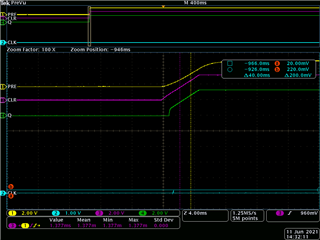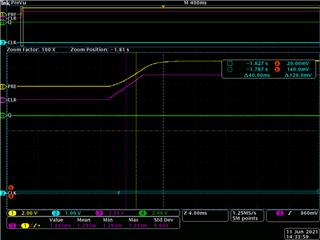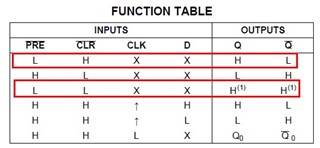Other Parts Discussed in Thread: SN74HCS74
Hi
I would like to know what timing does SN74LVC2G74-Q1 sample the high/low level of input ?
in the case below, Vcc, D, and CLR connected to Vcc. The PRE pin connected to Vcc with a RC delay.
I discovered that the Q is outputting since the Vcc is not ready. Is that a normal performance ?
I found the Q didn't output sometimes when I reboot.


after all, I want to know the following 2 question.
1. What is the sample timing of input ?
2. I want to make Q output high without CLK input when I boot my device, how can I make it stable ?
Thank you!!!


